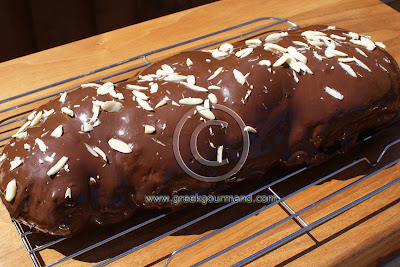Chocolate Tsoureki (Τσουρέκι Σοκολατένιο)

I visited the northern Greek province of Macedonia. We stayed for several days in Thessaloniki where we admired and sampled the sights and tastes of the beautiful port city. This recipe was inspired by that visit. My Chocolate Tsoureki - Click to Enlarge Image Tsoureki is essentially a Greek brioche style of sweet bread. The flavours of this bread consist of a hint of orange combined with mahlepi and a subtle essence of mastic (mastiha). It is usually made at Easter and is a universal element in the celebration of this most important holiday of the Greek calendar. Such braided breads are an ancient tradition among Greeks. The inspiration for this variation on the traditional tsoureki came from the storefront window of one of Thessaloniki’s best known bakeries, Τερκενλης ( Terkenlis ), which has been serving up its famous pastries since 1948. Today, Patisserie Terkenlis has several locations, mostly in Thessaloniki, with two shops in Athens, one of which is located at the Ele

